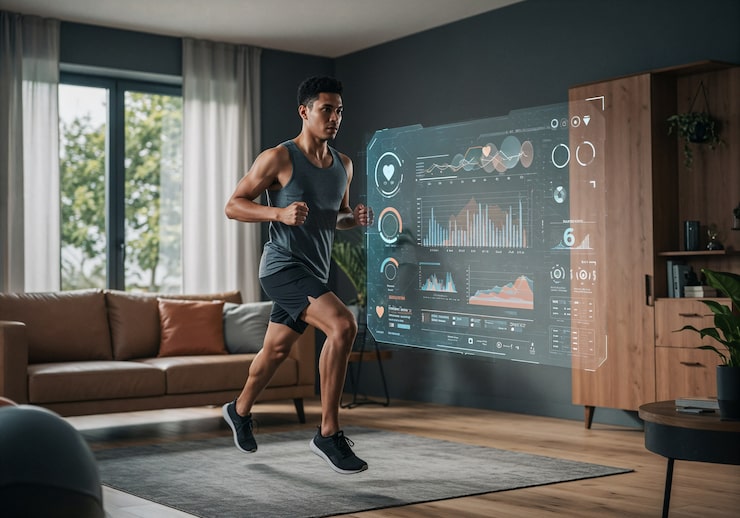With the advent of competitive fitness in today’s world, personalized, data-driven training is now essential to optimize body performance and avoid injury. Dressmart smart sportswear is the best example of innovation in this area by combining state-of-the-art muscle activity monitoring, electromyography, and biomechanics analysis to offer real-time advice on muscular work and movement quality. Scientific evidence attests that integrating such technologies with AI-driven training protocols optimizes workout efficiency and the learning curve. This blog examines the science behind smart wearables like Dressmart and how their sophisticated monitoring and feedback mechanisms allow users to tailor exercise programs, improve physical conditioning, and reduce the risk of injury through focused, evidence-supported interventions.
The Science Behind Muscle Activity Monitoring
Smart wear technology such as Dressmart utilizes sophisticated precision electromyography (EMG) sensors that are integrated into sophisticated fabric materials to capture accurate muscle activity monitoring during exercise. EMG quantitatively and directly records the electric potentials generated by contracting muscle fibers and provides direct and quantitative information on the levels of muscle activation. Scientific studies depict how real-time EMG feedback improves exercise form by allowing users to identify under- or over-developed muscles, and thereby ensure harmonious development (Journal of Electromyography and Kinesiology, 2024). Additionally, this precise muscle information prevents common training mistakes that lead to injury. With the combination of EMG and biomechanics analysis, Dressmart delivers in-depth information regarding neuromuscular coordination and muscle function, allowing users to create personalized exercise modifications as well as optimize exercises overall.
Biomechanical Analysis and Movement Optimization
Dressmart’s smart sportswear embeds advanced biomechanics analysis in the form of inertial measurement units (IMUs) like accelerometers and gyroscopes to continuously gather detailed data about joint angles, posture, and movement speed. Extensive biomechanics analysis of this type is required to detect subtle imbalances and erroneous movement patterns that can compromise performance or increase the risk of injury. Scientific evidence attests to the importance of biomechanical feedback in maximizing sports performance by enabling users to remove inefficient patterns of movement and support symmetrical muscle use (Sports Biomechanics Journal, 2023). By combining such data with patterns of muscle activity from electromyography sensors, Dresssmart provides a multi-dimensional analysis of body function. Participants benefit from increased exercise optimization through adjustment of their training based on these biomechanical discoveries to obtain safer, more efficient workouts tailored to their unique physiology.
Personalized AI-Driven Training Programs
The core strength of Dressmart lies in its convergence of AI-driven training to translate raw physiological and biomechanical data into customized workout recommendations. Using sophisticated machine learning algorithms, Dressmart translates from muscle activity monitoring and biomechanics analysis to predict muscle fatigue, growth tendencies, and recovery needs. This makes it possible to provide highly individualized, adaptive training programs that regularly evolve with the user’s progress. Current research confirms that AI-driven training regimens beat pre-packaged protocols by maximizing strength gains, reducing rates of injury, and maximizing rehabilitation outcomes (IEEE Transactions on Neural Systems and Rehabilitation Engineering, 2024). Dressmart’s ability to leverage AI for dynamically optimizing exercises makes it a requisite program for individuals searching for scientifically validated, efficient exercise protocols. The union of electromyography input with AI guarantees each workout maximizes muscle growth and functional ability.
Enhancing Motivation Through Data Transparency
Motivation is a critical factor for sustained fitness success, and Dressmart enhances motivation by delivering transparent, accessible feedback grounded in real scientific data. Through detailed muscle activity monitoring and biomechanics analysis, users receive clear visual reports on muscle engagement, movement quality, and progress toward goals. This data transparency supports behavioral science findings that quantified self-monitoring increases exercise adherence and satisfaction (Journal of Health Psychology, 2023). By integrating AI-driven training feedback with easy-to-understand summaries, Dressmart empowers users to track improvements and adjust their routines proactively. The continual flow of data from electromyography sensors to connected devices makes progress tangible, reinforcing commitment and fostering long-term engagement in fitness activities. Thus, the combination of real-time science and user-friendly design cultivates motivation through measurable results.
Injury Prevention with Early Detection
One of the greatest advantages of Dressmart smart sportswear is found in the prevention of injury through constant muscle activity monitoring and thorough biomechanics analysis. By facilitating early identification of asymmetrical muscle use, neuromuscular fatigue, and inappropriate load distribution, Dressmart provides alerts that trigger remedial intervention before injuries occur. Scientific literature highlights the importance of such early monitoring in both the prevention of overuse injury and the optimization of recovery interventions (British Journal of Sports Medicine, 2023). By integrating electromyography data with movement analysis, Dressmart gives a complete view of physical imbalance and stress. Further, the AI-derived training feedback is utilized to modulate exercise intensity and customize rehabilitation programs, which also reduces the risk of injury. The integration of real-time sensor feedback and AI feedback renders Dressmart a critical tool for long-term musculoskeletal well-being and sports performance.
Conclusion
The convergence of electromyography, biomechanics, and artificial intelligence is at the heart of the astounding capability of smart sportswear like Dressmart. By offering precise muscle activity monitoring, advanced biomechanics analysis, and adaptive AI-driven training programs, Dressmart transforms data into useful information that enhances performance, motivation, and safety. The presentation of complex physiological information in a clear manner increases user engagement, as fitness goals become more tangible and measurable. Also, the pre-detection of injury through high-level sensor analytics speaks volumes about Dressmart’s commitment to the promotion of long-term health. With wearable technology continuing to evolve, Dressmart remains on the cutting edge, empowering humans with science-driven tools to reach their full physical potential efficiently and safely.




